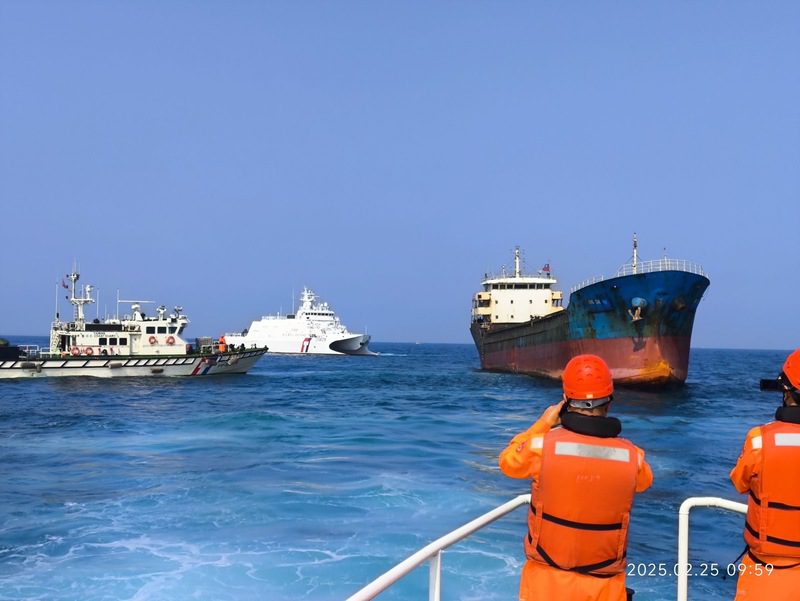
What is Taiwan’s lifeblood? Sea or air? There is something else under the sea: Undersea cables. Although fiber optic networks, the hidden highways of global data, connect Taiwan to the world, few people are aware of it. For an island like Taiwan, the cables that provide internet are extremely important. Interestingly, these cables have been damaged repeatedly lately. The usual suspects are Chinese ships that are constantly operating in the nearby seas. In this case, we wonder why Chinese ships are damaging the cables.
The Strategic Importance of Undersea Cables
First, let’s recall what we know about these fiber optic cables. More than 95% of international internet traffic travels over submarine cables. They carry everything from financial transactions and government communications to everyday emails and video calls. Cutting these cables wouldn’t just slow down Netflix; it could cripple Taiwan’s communications and severely damage its economy. As an island nation, Taiwan relies on these connections to connect to the global digital world. That’s why it’s vulnerable to Chinese cable attacks.
Potential Motives: Why Target Taiwan’s Cables?
If Chinese vessels are deliberately damaging these cables, several strategic goals could be at play:
- Gray Zone Tactics: This is the most likely explanation, in our opinion. “Gray zone” actions are hostile actions that fall below the threshold of conventional warfare. Damaging the cables would cause turmoil in Taiwan. We explained the reasons in the previous paragraph. Thus, China exerts pressure by playing on Taiwan’s nerves without firing a single bullet. Thanks to its underhanded tactics, no one can directly blame China. China can only claim that these were unfortunate accidents involving fishing boats or sand dredgers operating in the area. This deniability has historically been a key feature of gray zone tactics.
- Isolation and Disruption: The easiest way to isolate Taiwan from its allies is to cut off its communications. China wants Taiwan, which has weakened coordination in the face of a sudden attack. In addition, disruption of daily life and trade on the island is good news for the aggressor powers.
- Psychological Pressure: Repeated incidents send a clear message: “We can reach you, we can disrupt your critical infrastructure.” This aims to demoralize the Taiwanese population and leadership, demonstrating their vulnerability.
- Intelligence Gathering? Unlikely via Cutting: While tapping cables is an espionage tactic, cutting them doesn’t yield intelligence. However, frequent activity near cable routes, perhaps under the guise of fishing or dredging, could offer opportunities for mapping infrastructure or testing detection capabilities.
- Rehearsal for Conflict: Some analysts worry these incidents could be practice runs. In a potential conflict scenario, severing Taiwan’s communications would be a primary objective. These smaller-scale disruptions might be testing methods, response times, and repair capabilities ahead of a larger operation.
Are the Allegations Credible? The Challenge of Proof
Proving deliberate sabotage is difficult. The sea is vast, and accidents involving anchors and fishing gear do happen. However, Taiwanese authorities have noted a suspicious pattern. They report a high frequency of cable breaks, often coinciding with the presence of specific Chinese vessels (like sand dredgers or fishing boats) operating unusually close to cable paths, especially near the Matsu Islands, which lie close to the Chinese coast. While definitive proof of intent is often elusive, the frequency and location of these incidents raise serious questions that cannot be easily dismissed as coincidence.
Implications for Defense and Security
Whether accidental or intentional, the frequent damage highlights a critical infrastructure vulnerability for Taiwan. It underscores the need for:
- Enhanced Monitoring: Better surveillance of maritime traffic around critical cable routes.
- Cable Protection: Exploring physical protection measures or routing diversification.
- Rapid Repair Capabilities: Ensuring swift restoration of services when damage occurs.
- Resilience: Building redundancy in communication systems (e.g., satellite backups).
For the defense industry, this situation presents challenges and opportunities related to maritime surveillance technology, infrastructure protection solutions, and rapid response logistics.
Taiwan’s Undersea Cables: Conclusion
The mystery surrounding Taiwan’s damaged undersea cables remains. While concrete proof of deliberate Chinese sabotage is hard to come by, the strategic context, the frequency of incidents, and the potential motives make it a serious concern. It serves as a stark reminder of how vulnerable our interconnected world is and how non-military actions in the “gray zone” can have significant strategic impact. For Taiwan, protecting these digital lifelines is not just an economic necessity, but a matter of national security.





